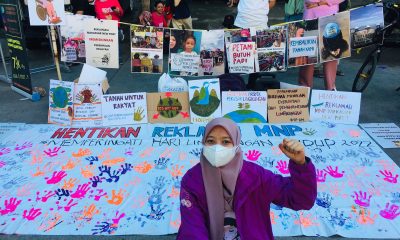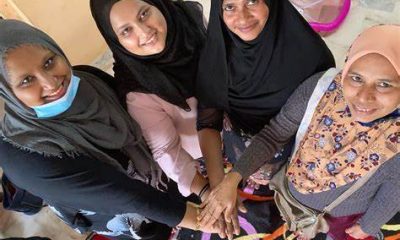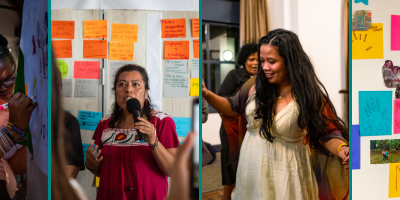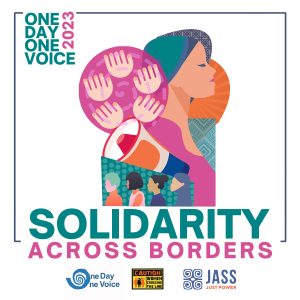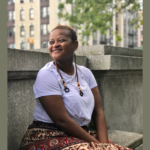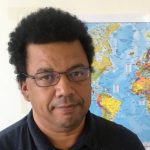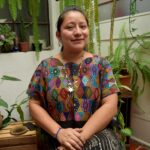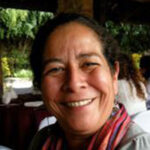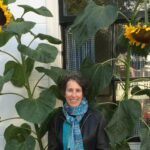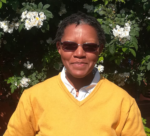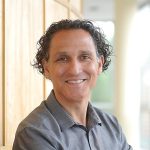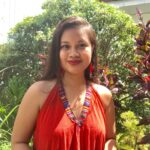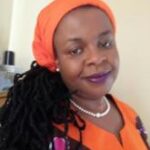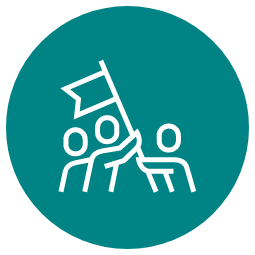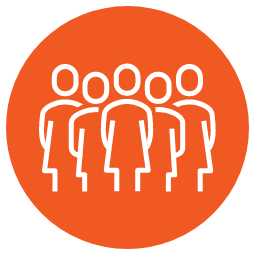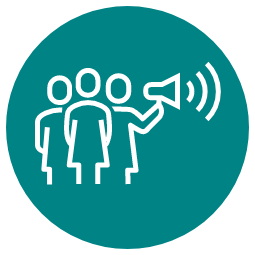The “Center Point Indonesia,” a land reclamation project in Makassar, has triggered strong local resistance…
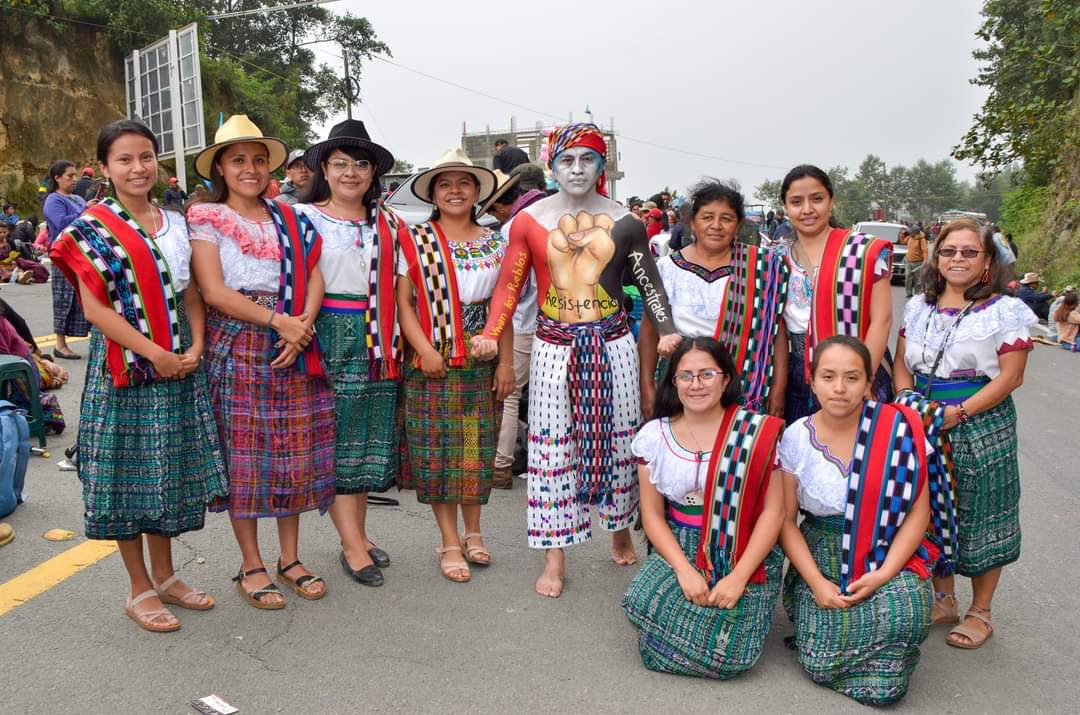
By Laura Carlsen
Km. 148 is a nodal point on the Interamerican Highway that connects the Indigenous villages along the shores of Guatemala’s world-famous Lake Atitlan. For weeks, the crossroads was a center of Mayan resistance in the longest and most powerful mobilization in defense of democracy in the nation’s contemporary history. At roadblocks, occupations and demonstrations across the country, Guatemalans, coordinated by Guatemala’s Indigenous peoples, put their bodies on the line in defiance of a ruling elite that refused to give up power after losing the Aug. 20 presidential election.
 Some 500 people from the department of Sololá gathered at Km. 148 daily to blockade the critical transportation route, demanding the resignation of the nation’s Attorney General and the judges who led efforts to block the inauguration of Bernardo Arevalo. Arevalo came out of nowhere as the only progressive candidate and son of a former president to pull off a surprise win against the group in power known as the “Pact of the Corrupt”.
Some 500 people from the department of Sololá gathered at Km. 148 daily to blockade the critical transportation route, demanding the resignation of the nation’s Attorney General and the judges who led efforts to block the inauguration of Bernardo Arevalo. Arevalo came out of nowhere as the only progressive candidate and son of a former president to pull off a surprise win against the group in power known as the “Pact of the Corrupt”.
For Debora Quiacain, an Indigenous activist from San Pedro La Laguna, a Tz’utujil Indigenous town nearby, the Km. 148 roadblock was life-changing. “I felt so happy to see that the whole population was there with the same purpose, and that the peoples had united at a transcendental moment in history,” she says, recalling those days with a smile.
Debora explains how the Indigenous Mayoralty of Santa Lucia Utatlan coordinated the actions. Womxn shouldered most of the logistics – they provided food, coordinated transportation, encouraged participation, and attended to the wellbeing of those present. Not only did all four major Indigenous groups in the country unite, they also united many others —students, workers, feminists, local residents, poor neighborhoods from the urban periphery —behind their leadership and extensive organizing structures.
Across the country, he ancestral authorities of the powerful K’iche’ organization, the 48 Cantons of Totonicapán, took the lead, and in big cities and rural caseríos of no more than a few families, Guatemala’s vast network of Mayan communities activated and mobilized to the call. The Indigenous Mayoralty of Sololá played a leading role especially in Debora’s region, and local Indigenous organizations took turns coordinating a permanent presence in front of the Public Ministry, where the Attorney General Maria Consuelo Porras orchestrated efforts to overturn the election. On one of the days, Mayan womxn -known for their beautiful weavings- set up their looms in front of the barred building, to “weave justice”.
“It’s now or never”- An Indigenous Call to Action
The emergence of a powerful and united Indigenous movement to defend the vote and oust the corrupt and authoritarian leaders surprised even its leaders. Why now?
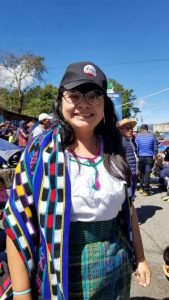 Debora notes that the people were fed up with the status quo. “We were so sick of a congress that approved millions of dollars of loans to themselves, ministers that forcibly displaced our communities, a Minister of the Interior who used power to criminalize our people. And we could see how the Congress supported all this and the President and cabinet too, and in the judicial branch we didn’t have a justice system that protected us or that found in favor of human rights. And we saw how together they were consolidating control, locking it in, to achieve the complete co-optation of the state.”
Debora notes that the people were fed up with the status quo. “We were so sick of a congress that approved millions of dollars of loans to themselves, ministers that forcibly displaced our communities, a Minister of the Interior who used power to criminalize our people. And we could see how the Congress supported all this and the President and cabinet too, and in the judicial branch we didn’t have a justice system that protected us or that found in favor of human rights. And we saw how together they were consolidating control, locking it in, to achieve the complete co-optation of the state.”
The structures of the state power exposed themselves as they openly sought to betray the popular vote. “This was the catalyst–when they had the nerve to go so far as to eliminate the election. That’s a dictatorship, imposed from within state institutions… so the [Indigenous] authorities stood up and said ‘Ok, we’ve got to pull together; it’s now or never’.”
This rejection of the ruling elite also combined with a new hope, sparked by a progressive party that rose to power on an anti-corruption platform.
Debora has long been an activist, as part of the collective of her community Tz’unun ya’. She says that her activist experience, and in particular, her participation in JASS’s Alquimia Feminist Leadership School helped her to understand the forces of power behind the corrupt leaders, identify key moments and support organizing for a mass mobilization.
JASS-organized gatherings of womxn land and territory defenders have also been key in strengthening Debora’s capacity as an organizer. “The exchanges increased my knowledge, links, alliances and even the power to see mechanisms and strategies for action that we were able to share and strengthen together,” she notes.
So when the time came for action, she felt prepared.
“JASS has been an organization that has encouraged me and provided me with tools and knowledge regarding hidden powers and the oppressive system
we live under– In Guatemala, in Latin America, and at the global level, “ Debora explains. “In this process of defense of democracy, thanks to these lessons and tools we can easily identify who are the actors that are violating rights and threatening democracy in Guatemala.”, she says further.
Victory and the Long Road Ahead
After 106 days of public pressure, the people won – Bernardo Arevalo and Karin Herrera were sworn in just after midnight on January 15. Their first stop as president and vice president was to thank the organizations of Indigenous peoples.
The celebrations lasted until dawn. The people celebrated the sheer relief of having banished a plundering and repressive regime from power. They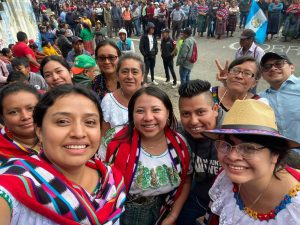 celebrated the hope of a new balance of power. And they celebrated themselves—an Indigenous-led movement that will go down in history as a textbook example of non-violent resistance.
celebrated the hope of a new balance of power. And they celebrated themselves—an Indigenous-led movement that will go down in history as a textbook example of non-violent resistance.
Debora has no illusions that the new president will resolve the injustices built up over 523 years of colonialism. “We know that there won’t be a change from one day to the next, because it will be progressive, and at least in the legislature, we still have rightwing parties that are very strong, so change and the policies that Bernardo announced in his campaign promises will come little by little.”
But some things have already changed. The historic mobilization of 2023 demonstrated the strength and leadership of Mayan organizations and shifted the relationship in Guatemalan society between Indigenous and non-Indigenous people. It also seems to be shifting gender relations within the Indigenous movement–in recent elections of Indigenous authorities, more womxn were elected, a sign of recognition for their role in the mobilization and their capacity for leadership.
For Latin America and the world, Guatemala went from being a warning of advancing authoritarianism to being an example of what the people can do when they decide to fight for their democracy. For indigenous people everywhere , the Mayan peoples of Guatemala, like Debora, have become the example of the power of ancestral organization.
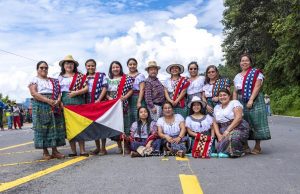 Debora concludes: “One of the most wonderful lessons to come out of this is that when we Indigenous people make a commitment, it’s decisive.. To see the results we achieved– that the inauguration even took place– teaches us that as Indigenous peoples we are a strong population and that this unity can lead us toward a truly plurinational state. But it also leaves lessons learned and future actions to continue to build alliances.”
Debora concludes: “One of the most wonderful lessons to come out of this is that when we Indigenous people make a commitment, it’s decisive.. To see the results we achieved– that the inauguration even took place– teaches us that as Indigenous peoples we are a strong population and that this unity can lead us toward a truly plurinational state. But it also leaves lessons learned and future actions to continue to build alliances.”

